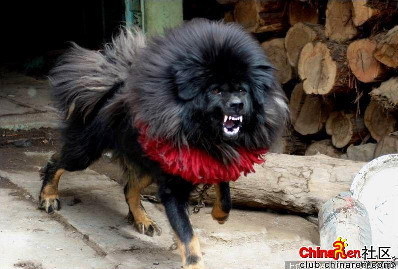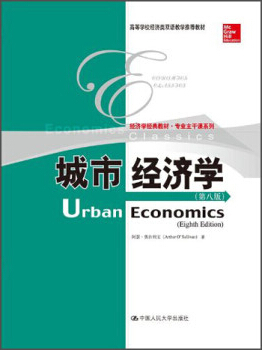The Story of Staple Food(第二集主食的故事,英文解说版)
China has diverse natural, conditions across its land. Asa result, Chinese people living in different areas enjoy absolutelydifferent but rich staple food. From the south to the north, thediverse staple food provide energy for human bodies. Moreover, theyinfluence people's feelings towards the change of four seasons andenrich the lives of the Chinese.
The Ding Village in Shanxi is the most ancient village inthe Central Plains. Housewives here are best at making food out offlour. Local people call the powdered cereals as flour.Cerealprocessing has a history of over 10,000 years. The most ancientmillstone was unearthed just nearby. Today, millstones of the sameshape are still being used. Millstones grind up cereals intopowders. Sieve out the coarse grains. Then the real flour foodappears.
Rich in mountains while lacking rivers, Shanxi is scarcein its vegetable varieties. Housewives cannot do much to enrich thenon-staple food. So they figure out different ways of making flourfood to increase the family's appetite. Flour is processed intovarious delicacies on the table.These diverse and delicate foodsremind people of the women's nimb le fingers and richimagination.
When the women in the Ding Village are busy preparing abirthday feast, a fragrance of flour floats out from a cave houseon the loess plateau. Huang Guosheng, a Suide native, just got atray of yellow buns steamed. Processed by Huang, the glutinousmillet becomes sweet and tasty. From the lunar November on, hewould ride 1.5 hours to the county town every three days to sellthe buns.
Suide County sits in the hilly-gully areas in NorthernShaanxi. Today, minor cereals and wheat are the main ingredients onthe table. Local people make them into diverse dishes. Suide isrich in the glutinous millet resources. The yellow steamed buns aremade with this main ingredient.
Due to its drought-enduring nature, glutinous milletbecame the most important crop on the loess plateau. It was plantedalong the Yellow River regions more than 8,000 years ago. If theglutinous millet is directly steamed, it doesn't taste good enough.But it used to be the most popular staple food for people inNorthern Shaanxi.
There are two types of glutinous millets, the hard and thesoft. Huang Guosheng mingles the two based on this proportion: 70%hard glutinous millets and 30% the soft kind, dip them in waterover a night and then grind them up on a millstone. Then he woulduse a sieve to get rid of the rough grains. Huang firmly believesthat the glutinous millet powdered by a machine lags far behindthose ground up on his millstone.
Fried glutinous millet produces natural fragrance. That'sa recipe that Huang feels most proud of. After kneading theglutinous millet flour, Huang would put it in a big jar forfermentation for a night. Experience taught Huang to wrap up thejars with quilts to make the bunstastier.
Huang's home, a cave house, is the most traditionaldwelling format on the loess plateau in China. It has a history ofover 4,000 years. For the hardworking farmers here, their basicwish is to renovate a cave into a home and marry a wife. That's howa life gets complete.
Huang and his wife can make 700 buns every time. Grindingup, kneading and fermentation, the whole process takes 3 days. Thecouple works from 3 a.m. through 9 p.m. Huang's buns aregood-tasting. And Huang is an honest businessman. One yuan for eachbun, no bargain. In the coldest two months of a year, Huang cansell 15,000 buns. Taking into account the cost, he can earn 8,000yuan in a winter.
Huang has a son and a daughter. Both have settled down inthe city. They no longer work on the farmland. But Huang doesn'twant to leave. Living in his cave house and eating the food heplants, Huang feels satisfied with hiswife.
For thousands of years, Chinese people gain food andclothing from the five cereals. The feel of satisfaction brought bythese carbohydrates is just provided by millions of hardworkingfarmers like Huang.
In autumn, the ripe wheat decides the basic color of theland in North China. Wheat was introduced into the Central Plainsthrough the Hosi Corridor. As it contains rich nutrition, it hasbeen the most vastly planted crop in North China after alocalization process of over 4,000 years. This species originatedfrom West Asia and has become the most important staple food forthe Chinese.
After the wheat flour ferments, people bake them in aspecially-designed fire pit. This type of round pancake containslittle water and can be preserved for a long time. They're theindispensable staple food for Uyghur families in allseasons.
以上是1分钟到13分30秒的解说词。
另附: 美食中英对照
黄馍馍:yellow steamed bun
葱油椒盐花卷:steamed twisted rolls with scallion and spicysalt
干炒牛河:stir-fried rice noodles with beef
腊汁肉夹馍:Chinese hamburger
羊肉泡馍:pita bread soaked in lamb soup
岐山臊子面:Qishan minced noodles

端午粽子:zongzi
毛蟹炒年糕:rice cake stir-fried with crabs
扁豆焖面:braised noodles with lentil
清明团子:sweet green rice ball
 爱华网
爱华网



